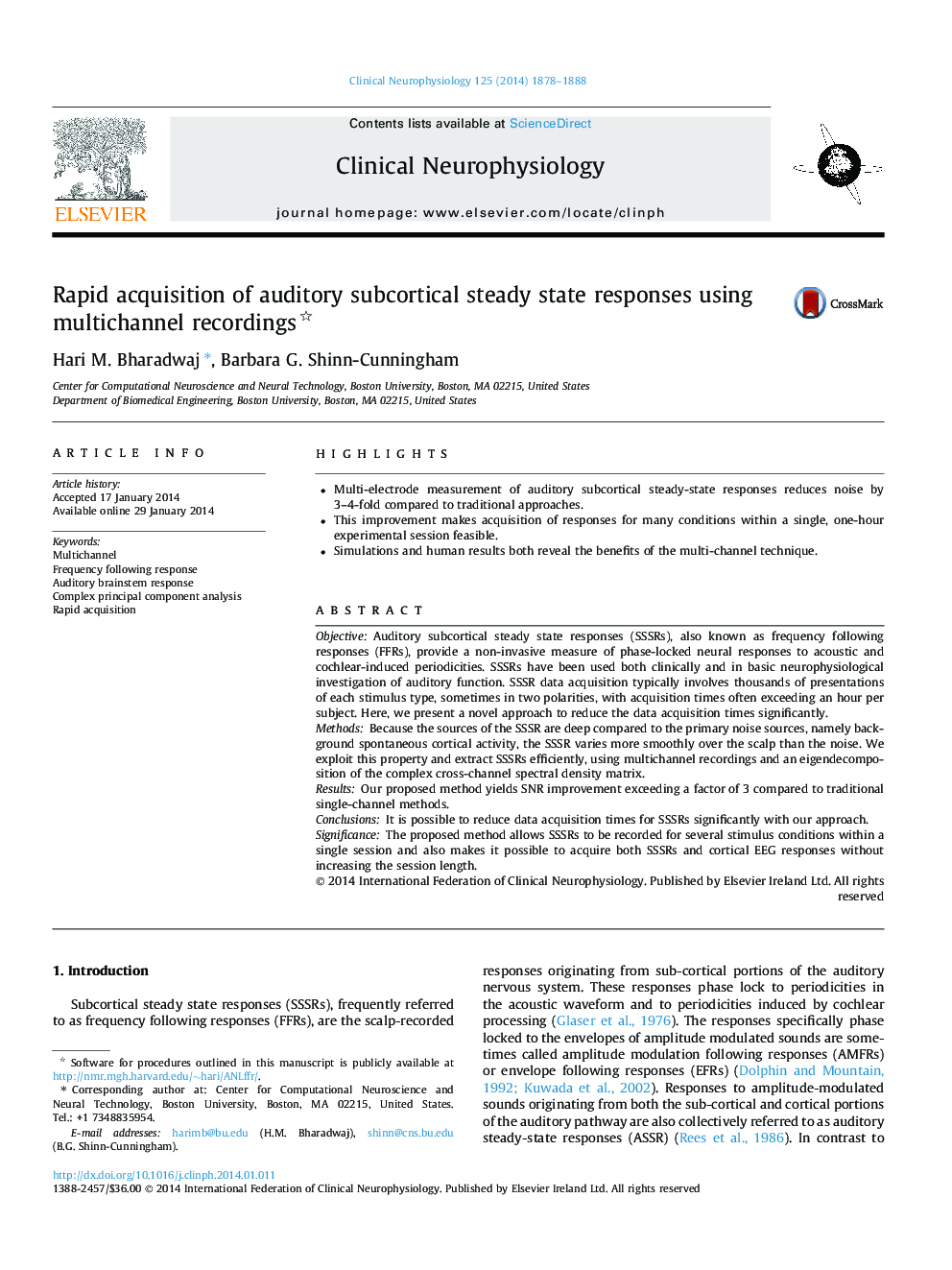| Article ID | Journal | Published Year | Pages | File Type |
|---|---|---|---|---|
| 3043187 | Clinical Neurophysiology | 2014 | 11 Pages |
•Multi-electrode measurement of auditory subcortical steady-state responses reduces noise by 3–4-fold compared to traditional approaches.•This improvement makes acquisition of responses for many conditions within a single, one-hour experimental session feasible.•Simulations and human results both reveal the benefits of the multi-channel technique.
ObjectiveAuditory subcortical steady state responses (SSSRs), also known as frequency following responses (FFRs), provide a non-invasive measure of phase-locked neural responses to acoustic and cochlear-induced periodicities. SSSRs have been used both clinically and in basic neurophysiological investigation of auditory function. SSSR data acquisition typically involves thousands of presentations of each stimulus type, sometimes in two polarities, with acquisition times often exceeding an hour per subject. Here, we present a novel approach to reduce the data acquisition times significantly.MethodsBecause the sources of the SSSR are deep compared to the primary noise sources, namely background spontaneous cortical activity, the SSSR varies more smoothly over the scalp than the noise. We exploit this property and extract SSSRs efficiently, using multichannel recordings and an eigendecomposition of the complex cross-channel spectral density matrix.ResultsOur proposed method yields SNR improvement exceeding a factor of 3 compared to traditional single-channel methods.ConclusionsIt is possible to reduce data acquisition times for SSSRs significantly with our approach.SignificanceThe proposed method allows SSSRs to be recorded for several stimulus conditions within a single session and also makes it possible to acquire both SSSRs and cortical EEG responses without increasing the session length.
